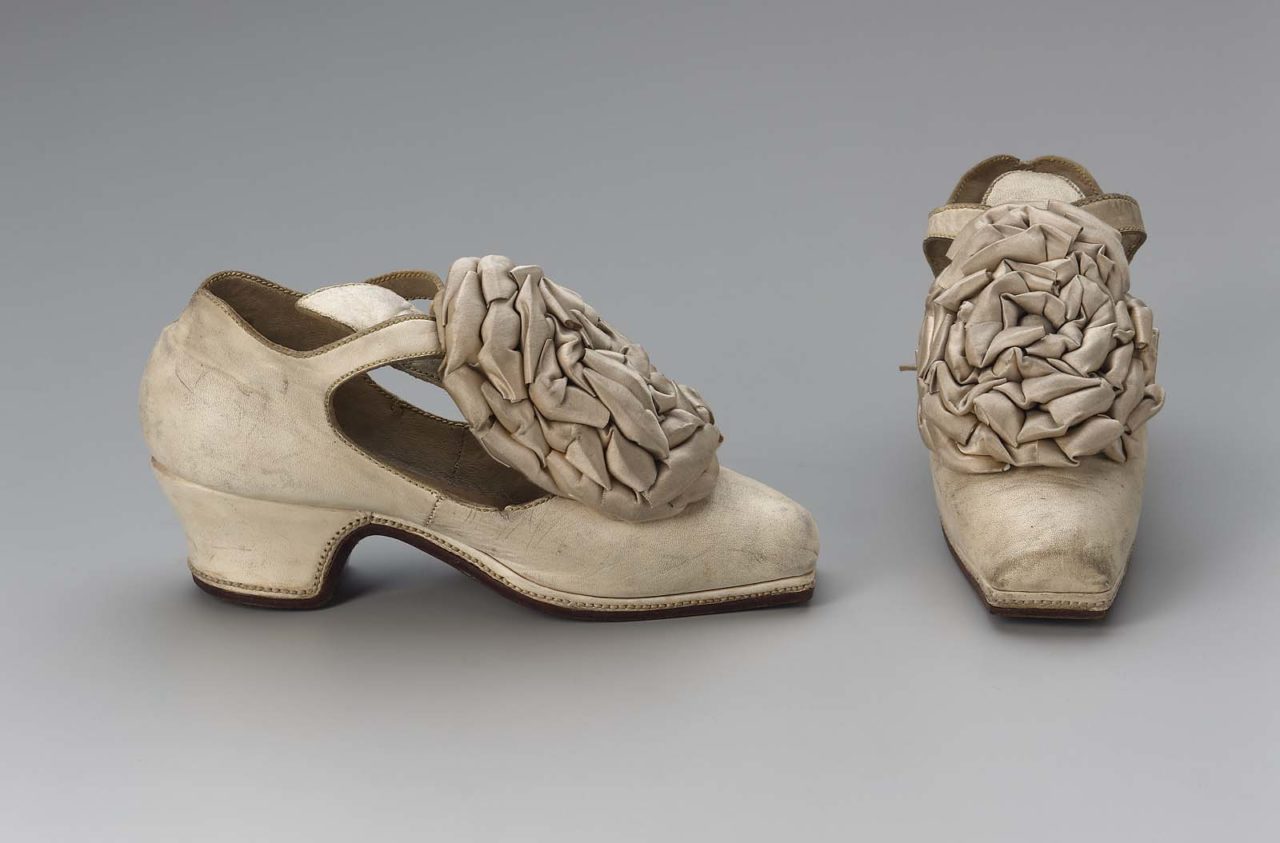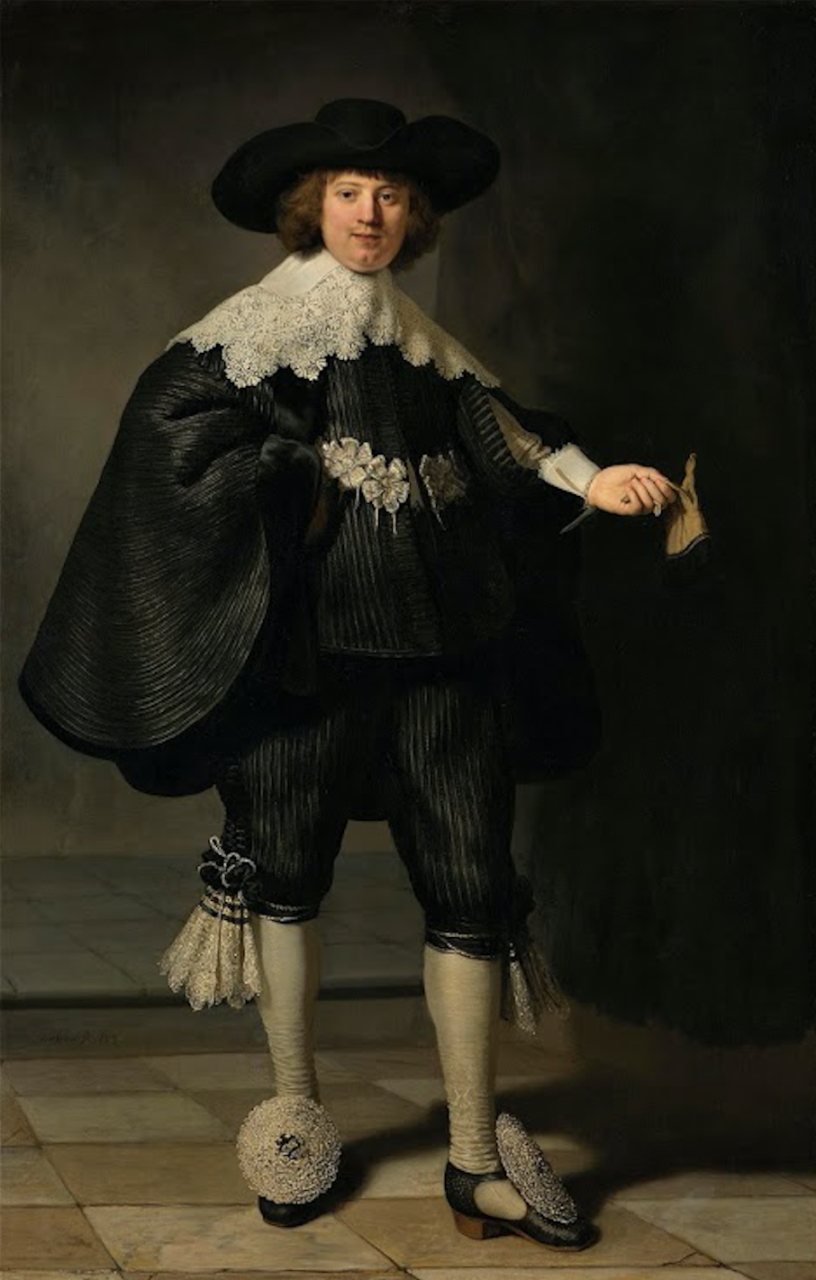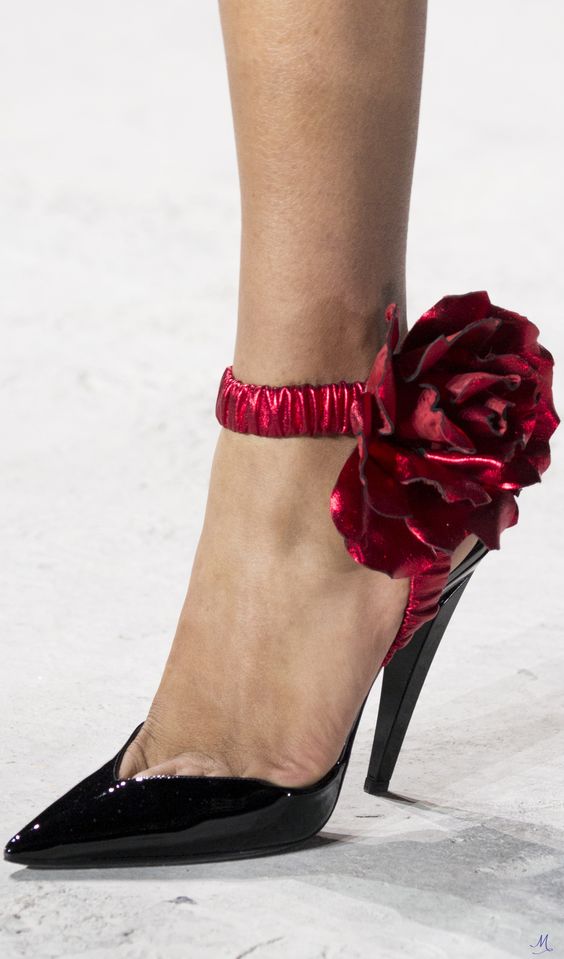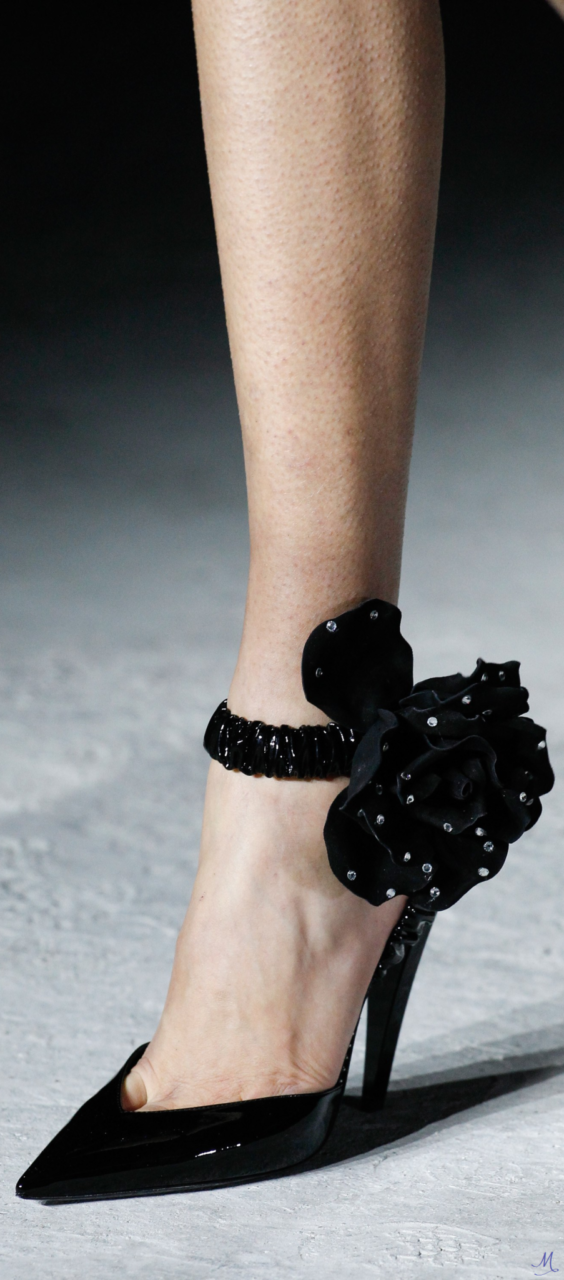A decorative rose element usually found on shoes in the 17th century as fashion statement.
The Details
An essay on “Seventeenth-Century Footwear” in Fashion, Costume, and Culture (2013) describes the iconic nature of rosette embellishment of the 1600s:
“During this time, shoe roses became especially popular. Shoe roses were ribbons twisted into a rosette or gathered into a large ruffled puff. These decorations were often made of gold or silver lace-edged ribbons and could be quite expensive. One noted English trendsetter, Richard Sackville, the third Earl of Dorset, who spent his fortune almost entirely on clothes, counted his shoe roses as separate, special items in his wardrobe and took special pride in his shoe roses made of gold lace.”
William Larkin’s full-length portrait of the trendsetter Richard Sackville, Earl of Dorset (Fig. 1), painted c. 1613-18, vividly shows the enormous luxury roses on his shoes. The detail of the shoes (Fig. 2) displays the delicate materials used on these fashionable extravagances.
Moreover, Daniel Delis Hill mentions roses in the History of World Costume and Fashion (2011) as one ornate form of shoe decoration in the 17th century:
“Massive roses (also rosettes) of lace, embroidered linen, spangled velvet, and other luxuriant materials were affixed to the tops of instep straps.” (398)
If the Shoe Fits (1964) by Bill Severn talks about how rosettes could be used as a sign of high social and economic status:
“Shoe roses, worn on the instep, grew to be four or five inches in diameter and ranged from simple ribbon rosettes to lavishly embroidered and jeweled creations formed of expensive lave as fine as that used for neck ruffs. A middle-class man might spend a week’s income for a pair of shoe roses while those worn by a wealthy noble could equal an average family’s earnings for an entire year.” (80)
As shown in figure 3, the Museum of Fine Arts, Boston has rosette-decorated shoes in their collection. It is simpler rose made from silk ribbon, twisted into shape. In comparison, Dudley North, the 3rd Baron North (Fig. 4) in a portrait at the Victoria and Albert Museum is wearing a lavish rosette shoe.
Fig. 1 - William Larkin (English, 1580-1619). Richard Sackville, 3rd Earl of Dorset, 1613. Oil on canvas; 206.6 x 121.6 cm. Kenwood: English Heritage, 88019154. gift from Mrs Greville Howard, 1974. Source: ArtUK
Fig. 1 - William Larkin (English, 1580-1619). Richard Sackville, 3rd Earl of Dorset (detail), 1613. Oil on canvas; 206.6 x 121.6 cm. Kenwood: English Heritage, 88019154. gift from Mrs Greville Howard, 1974. Source: ArtUK
Fig. 3 - Designer unknown. Pair of men's tie shoes, Late 19th century. Kid leather and silk. Boston: Museum of Fine Arts Boston, 44.503a-b. The Elizabeth Day McCormick Collection. Source: Museum of Fine Arts Boston
Fig. 4 - Artist unknown (British). Dudley North, the 3rd Baron North, ca. 1615. Oil on canvas. London: Victoria and Albert Museum, P.4&:1-1948. Given by Sidney F. Sabin. Source: Victoria and Albert Museum
Author June Swann explains the elaborate decorations of roses of the 17th century in Shoes (1982), with reference to Sackville (Fig. 1):
“Mr. Sackville’s inventory of 1617-19 lists assorted pairs of roses – green, gold, black, with or without gold and silver lace. And they were expensive accordingly. Massinger’s City Madam (1632) has the following comment: ‘Men of mean rank wear garters and shoe roses of more than £5 price’.” (12)
To explain the extravagance of the rosettes on shoes, she also writes:
“As Ben Johnson said in The Devil is an Ass, shoe roses were ‘big enough to hide a cloven hoof’, or John Webster, in The Devil’s Lawcase, 1618: ‘overblown roses to hide your gouty ankles’.” (12)
In the Portrait of Marten Soolmans (Fig. 5), Rembrandt van Rijn paints one of the fanciest and the largest roses that are as Johnson said: “big enough to hide a cloven hoof.”
Fig. 5 - Rembrandt van Rijn. Portrait of Marten Soolmans, 1634. Oil on canvas; 210 x 135 cm. Amsterdam: Rijksmuseum. Dutch State for the Rijksmuseum. Source: Rijksmuseum
Its Afterlife
Rosettes as shoe decoration are commonly found today. Yves Saint Laurent’s Fall 2017 RTW collection (Figs. 6-7) and in Brock Collection’s Fall 2018 line (Fig. 8) offer chic takes on 17th-century roses. Fendi at Couture Fall 2017 (Fig. 9) also seems inspired by rosettes.
References:
- Hill, Daniel Delis. History of World Costume and Fashion. Upper Saddle River, NJ: Pearson Prentice Hall, 2011. http://www.worldcat.org/oclc/939043732.
- Severn, Bill. If the Shoe Fits. New York: McKay, 1964. http://www.worldcat.org/oclc/1403849.
- “Seventeenth-Century Footwear.” In Fashion, Costume, and Culture: Clothing, Headwear, Body Decorations, and Footwear Through the Ages, 2nd ed., edited by Sara Pendergast, Tom Pendergast, Drew D. Johnson, and Julie L. Carnagie, 525-530. Vol. 3, European Culture from The Renaissance to the Modern Era. Detroit: UXL, 2013. Gale Virtual Reference Library (accessed September 23, 2018). http://libproxy.fitsuny.edu:2540/apps/doc/CX2760000102/GVRL?u=fitsuny&sid=GVRL&xid=1569e704.
- Swann, June. Shoes. Costume Accessories Series. London: Batsford, 1982. http://www.worldcat.org/oclc/473947961.


















